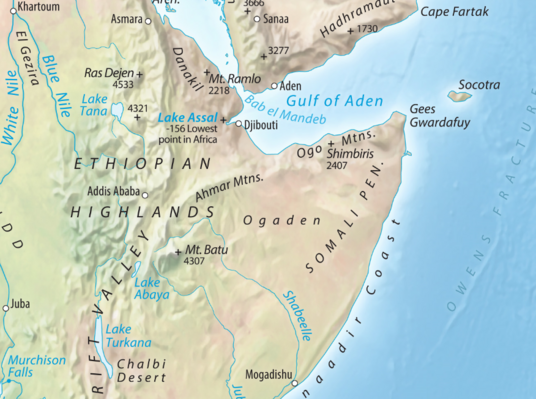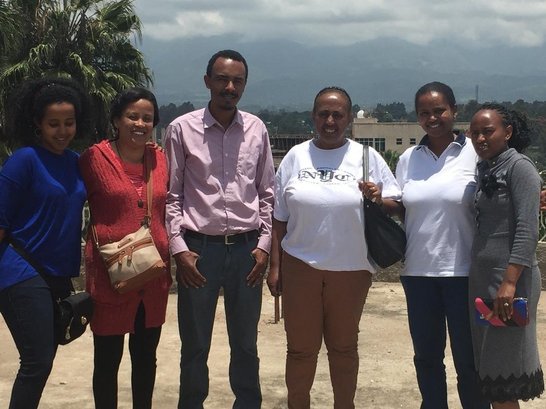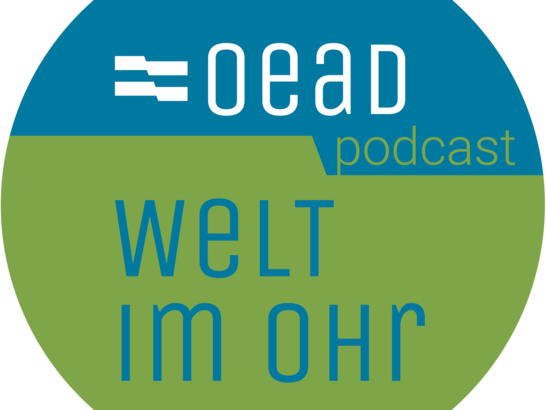
Technology Enabled Maternal and Child healthcare in Ethiopia | TEMACC-Ethiopia

Project Coordinator: Univ.-Prof. Dr. Gustav Pomberger, Dr. Johannes Sametinger
Coordinating Institution: Johannes Kepler University of Linz
Partner Institution: Addis Ababa University (Dr. Rahel Bekele Teklegiorgis)
Partner Country: Ethiopia
Project Duration: 1st of January 2017 – 31st of March 2020
Abstract
The TEMACC research project aims to explore the potential of information and communication technologies (ICT) for rural development particularly to improve healthcare access and quality for mothers and children in rural communities. It is an attempt to contribute to aspects of two of the sustainable development goals namely - SDG 3: Ensure healthy lives and promote well-being for all at all ages; and SDG 5: Achieve gender equality and empower all women and girls. It is an interdisciplinary effort by professionals from the ICT fields together with specialists from public health and medicine. It rests on cooperation, built since 2006, between Addis Ababa University and the Johannes Kepler University Linz.
The objective is to develop an appropriate ICT-based service platform, which enables mothers to receive public health related information without the need to travel long distances; helps health extension workers to receive health education online or on their mobile devices by interacting with a specialist elsewhere without leaving their hometown or locality; allows collaboration and consultation among healthcare professionals, and creates virtual professional communities for improving maternal and child healthcare. Among the major technology platforms to be explored for use are: mobile phones, satellite tablets, web-based systems and related media technologies. The underlying research questions relate to whether there can be a significant improvement in maternal and child healthcare practices of rural communities using information and communication technologies. The research approach will be participatory action research with direct participation and active collaboration of the user community.
Overall, there are four aspects to be considered: (i) Provision of personalized maternal and child healthcare; (ii) Support with educational materials; (iii) Case-based knowledge sharing and (iv) Access to emergency services. This leads to the context-sensitive development of an ICT-based system with three components. The mothers system aims to make maternal and child care information on antenatal care, postnatal care, child nutrition and hygiene accessible to mothers in rural areas. The health extension workers system benefits poorly educated health extension workers in remote health posts and aims to enhance their awareness and adoption of appropriate maternal care. The professionals system addresses the life-long education needs of health professionals serving the rural community. System development will be based on requirements determination through user studies and on participatory and incremental methods. The educational materials (‘contents’) for mothers and health extension workers will be taken from the Ethiopian Ministry of Health in accordance with the guidelines of the World Health Organization. The materials for health professionals will be worked out in collaboration with medical experts. Major challenges will be: selection of appropriate contents, translation to local languages and presentation in formats adapted to the target groups, including video, audio, text and images/pictures.
The tangible outcomes will be the ICT-based system and the library of contents. There will also be an increase in awareness of mothers and health extension workers on public health issues, and in the number of health professionals engaged in consultancy. Sustainability will be achieved by local capacity building and attaching the results to the overall national strategic development. The contents can be used as basis for subsequent educational strategies by governmental or non-governmental institutions. The evaluation will take the form of a community-based intervention study by design with comparable endpoints in selected districts of Ethiopia.
List of project results
Software
Mothers system
- Information source for (illiterate) mothers
- Educational and promotional material on basic healthcare in textual, audio and pictures, with very user-friendly interfaces
- Educational content on ante-natal care (ANC), post-natal care (PNC), hygiene, nutrition, vac-cination, care for sick babies
- Alerts and reminders (ANC and PNC)
- Information on how to get support from healthcare workers in the area
HEW system
- Registration of mothers/pregnancies/infants/deliveries/follow-up visits
- Administration of visits (lists of scheduled visits to allow for tracing unattended visits)
- Online reference
- Essential data on women for screening and follow-up purposes
- Calculations like expected date of delivery with basic information such as last menstrual pe-iod
- Alerts and reminders (ANC and PNC)
- ANC follow-up starting from registering a pregnant woman up-to labor and delivery
- Access to medical history, standardized form for capturing situation assessment results and delivery details including date of delivery, place of delivery, delivery status, etc.
- Time management to organize activities, specifying the purpose and location of each entry and to maintain schedules on various activities/topics
- Planning training programs for women on various topics at home or in neighborhood
- Readily accessible digitized versions of centrally prepared content on primary level healthcare
- Flexible navigation and searching mechanisms to access digitized content
Professionals system
- Web-based clinical application system
- Health material storage & retrieval system
Family planning app
- Administration of family planning methods
- Appointment/medication reminders
Library of Contents
- Educational content for mothers and HEWs: English and Amharic; Text, images and audio (videos adopted from Ministry of Health and other International NGOs); ANC, PNC, hygiene, nutrition, vaccination, baby care, family planning
Publications
- 2 papers at International IT conferences
- 2 papers at International medical congresses
Data on intervention study
- Base line data (250 mothers)
- End line data (249 mothers)
- Usage statistics
Safe Delivery for Mother and Child in Butajira
- Plan to build a new delivery facility at Butajira health center
- Outside the scope of TEMACC, but sparked by the TEMACC project
Impact and sustainability
The TEMACC project contributes to development in the Southern partner country in several ways. First and foremost, it provides an innovative basis for the empowerment of rural communities in matters of maternal and child healthcare. The IT systems developed in TEMACC support three target groups: mothers, HEWs and health officers. The feedback obtained indicates that all systems were eagerly accepted, routinely used, and integrated into daily life. As we had hoped, the users developed a sense of ownership of the technologies that had been developed in participatory design.
Although the intervention study was too small for its results to be conclusive, there are indications that – during nine months of use – the understanding and self-confidence of the mothers, their relation to HEWS, and even their standing in the community changed significantly. For example, when we visited some mothers at their homes, they explained that before the project started they did not even have words to talk about issues concerning their bodies. Therefore, their contact with HEWs could not be productive: they were given information that they could not under-stand and soon forgot. Frustration on both sides. But the app was ‘patient’. It could be consulted again and again, until the mostly illiterate women mastered the new words and understood their implications. Eventually, ‘our’ mothers were consulted by their neighbors, even by older women; local centers of competence emerged and they were proud to be considered as community teachers.
TEMACC has shown the potential of making a significant improvement to the system of primary healthcare in Ethiopia, which consists of health centers and health posts. Both health officers and HEWs reported that they had adopted the system and changed their working routines accordingly. The centralized storage and management of data avoids redundancy, data loss, and mistakes. Also, HEWs and health officers are now able to think of their work steps as integrated in a case-oriented service flow, in which they are engaged over time in cooperation with other actors such as doctors and local hospitals. This gives rise to a more comprehensive sense of their work and leads to qualitative growth.
The TEMACC system is currently in use in the Butajira area, and can be transferred as is to other areas in Ethiopia. The language can be changed as needed and the functionalities can be extended so as to cover other fields of interest such as family planning or reproductive education. Shortly after the project end, the TEMACC platform has been used by its developers as a basis for providing an app that gives information on preventing Corona virus infections. The app is being distrib-uted to the very poor by a local help organization.
TEMACC also contributes to development as model project for ‘ICT for Development’. This phrase, coined by the United Nations, is a very open term and needs to be made concrete and filled with mean-ing. The TEMACC project has not only shown that appropriate technology for supporting healthcare delivery can be successfully developed and is accepted with enthusiasm by the rural community. It has also demonstrated the value of appropriate methods.
In TEMACC, ‘ICT for Development’ was understood along three dimensions.
- Contextualized ICT systems design,
- ICT-mediated knowledge enhancement,
- ICT-enabled community empowerment.
All three dimensions have been pursued; the emphasis so far was on contextualized systems design. The approach adopted in system design was based on ethnographic research, user participation, and user-centered design. Software development relied on incremental development in version-oriented cycles in keeping with an agile approach. All these methods, based on generally available literature, were carefully adapted to the context at hand. They provided a framework for needs assessment and acceptance test, and gave rise a sense of ownership in the different user groups. The resulting system and the methods employed are well documented and can serve as an example for others who may want to proceed along a similar line. If TEMACC is continued, the other dimensions, ICT-mediated knowledge enhancement and ICT-enabled community empowerment, will gain importance.
Finally, TEMACC makes a valuable contribution to IT capacity building in Ethiopia on senior and junior levels. For the senior scientists involved, it provided a rare opportunity for leadership in an international and interdisciplinary project with a highly innovative outlook in an area of great concern in their country. It enabled them to get to know and/or try out advanced methods in the fields of user participation, sys-tem design, and software development. Hopefully, they will become key actors in modernizing the health system in their country with the help of ICTs. For the junior scientists in the team, mostly from AAU, TEMACC provided a rare opportunity to do their bachelor’s and master’s work in an international, innovative project practicing advanced methods and doing relevant community work.
The experience of developing software in cooperation between Linz and Addis Ababa was an oppor-tunity of learning for both sides when it became clear that ‘software engineering’ had a different em-phasis in industrial and developing countries. In industrial countries, the emphasis is on the construc-tion of large software systems, but in developing countries, the focus is on adapting existing systems for contextual needs. Thus, the JKU side learned about contextualization. On the other hand, a gap in software construction methods was identified in Ethiopia. This led to the decision to address this gap by means of dissertation research. Both PhD students, Henock Lulseged and Betsegaw Dereje pursue practice-oriented research topics in the area of soft-ware construction that will have a direct impact on the practice of software development and college-level teaching.


